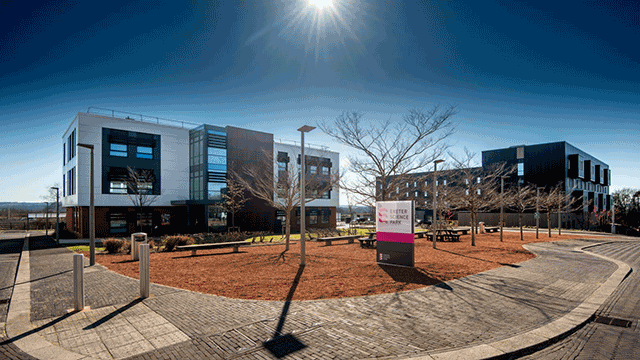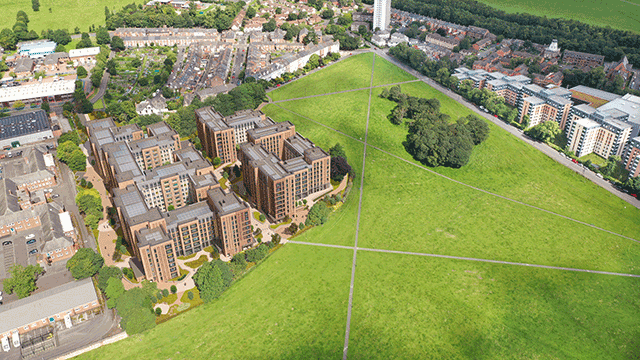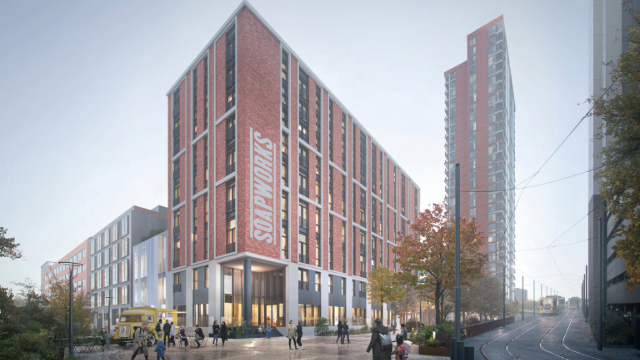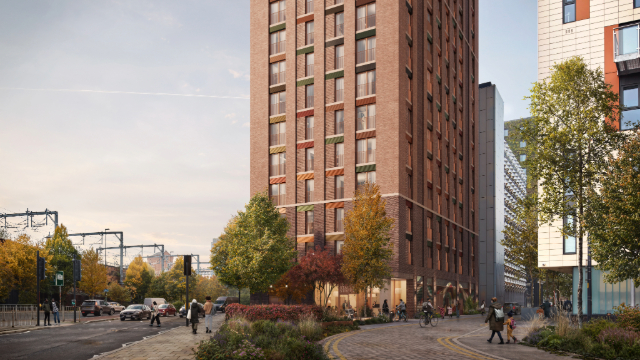A decade ago, Birmingham often had the unfortunate accolade of topping lists of the UK’s – and Europe’s – least attractive cities. The giant silver mass that is the Bullring shopping centre, home to Selfridges, even earned the label of the UK’s ugliest building in a 2008 survey.
But for many of the city’s leaders today, there is an unwanted reputation of even greater concern in the birthplace of the industrial revolution – one for pollution amid the growing climate crisis.
“We have a sort of moral responsibility, a debt,” says West Midlands Combined Authority mayor Andy Street. “We were the start of it all, so I do feel very strongly that we actually have another leadership responsibility to find the solution to this challenge.”
Street adds that “just as it started here, it is coming back to haunt us”, pointing to recent floods in the region and quoting staggering statistics that air pollution in Birmingham shortens the life of every child by half a year, creating 900 premature deaths annually in the city.
Street’s warnings come as the West Midlands seeks to achieve net-zero carbon emissions by 2041. Not only will the region look to beat the government’s 2050 target by almost a decade, it is also launching a design charter to hold new developments to account.
Deborah Cadman, chief executive of the WMCA, says: “With all the investment that is being made into the region, we are building a future and we want that to be right for residents and businesses.
“A challenge for us is to make sure the sector doesn’t just build the ‘same old, same old’ for a particular community and a particular context [that] is no longer relevant, when you look at how people want to live, work and play.”
Long-term investment
Last year, the WMCA declared a climate emergency and it is now calling on the built environment to combat this.
The West Midlands Design Charter has been backed by Lovell Partnerships, the Design Council, Landscape Institute, Homes England, 18 local authorities and three Local Enterprise Partnerships.
They are demanding that development provides character, connectivity and mobility, future readiness, health and wellbeing, engagement, and social value. And they will hold developers to this during the planning process. The WMCA is also supporting the national Housing Design Awards and will be seeking exemplar projects to promote local developers on an international stage.
While the combined authority lobbies the government for increased public funds, for the most it will come down to the private sector to foot the bill.
“Can we afford not to?” asks Cadman. “Can we afford not to invest to design the right things in the right way?”
“If we design and build places that aren’t sustainable and don’t allow people to flourish and their health and wellbeing to be maintained, then the impact of that on both the public sector and community cohesion is just too much.”
The fact that we live in such a diverse region is both a privilege and an opportunity. We need to make sure the future that we design and build is a future for everybody.
Deborah Cadman, chief executive, West Midlands Combined Authority
The Design Council argues that these plans could provide a huge economic boost for the region, building on recent growth of the industry. It estimates that the design sector has seen more growth than in any region outside of London, expanding by 83% between 2010 and 2017, and contributing around £503m a year to the economy.
Street points out the heritage of iconic design in the region, from car models like the Mini and E-Type Jaguar to the new library and even divisive designs like the Bullring. “The charter will build on that existing talent and seek to take it to the next level, helping to establish the West Midlands as the UK design capital,” he adds.
High-density housing
When asked to point out bad examples of property design in the West Midlands, both Cadman and Street dodge the question. But Street does point to Urban’s Splash Icknield Port Loop for residential inspiration, as well as highlighting the council estates of Glasgow as a case of housing gone wrong.
Sarah Weir, chief executive at the Design Council, agrees: “Those big estates are not necessarily conducive to people feeling connected to each other.”
She adds: “In the 1960s and 1970s we made mistakes. We know what those mistakes were, we do not need to repeat them. If we are not careful, we will.”
This is clear from the level of development in Birmingham city centre alone. The pipeline is filled with half-century-old schemes that are now in need of regeneration. Birmingham City Council is currently procuring a partner for the regeneration of the 1960s Ladywood Estate, which will see 1,000 council homes replaced with around 6,000 homes on a 150-acre site.
See also: Give my regards to Broad Street, say investors
Meanwhile, Hammerson is set to tear down the old Martineau Galleries shopping centre with plans for offices and housing, while a scattering of office blocks lining Broad Street have been earmarked for high-rise residential development.
“Density is not bad, it is how you do it,” says Weir. “That comes back to people being involved in how that is going to look and feel and how people are going to be connected to each other within that space.”
Cadman says this inclusivity should be at the heart of sustainable development and will be vital to meeting these new standards.
“The fact that we live in such a diverse region is both a privilege and an opportunity,” she says. “We need to make sure the future that we design and build is a future for everybody.”
To send feedback, e-mail emma.rosser@egi.co.uk or tweet @EmmaARosser or @estatesgazette











